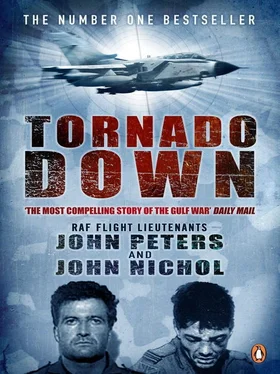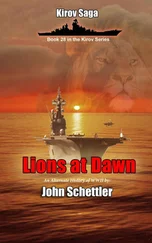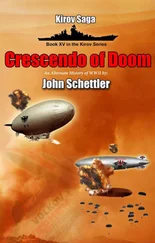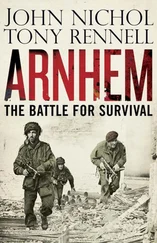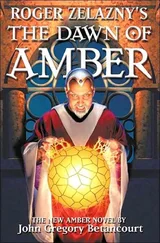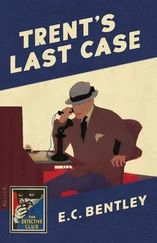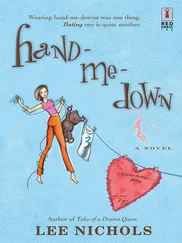The whole exercise certainly concentrated my mind. For John, sitting in the back, it was even more hair-raising. On our first bite at this particular cherry, he was muttering: ‘I am not paid enough to do this. I am definitely not paid enough to do this.’
This was some of the most exciting flying that we had ever done; it was very, very challenging. When, aged fourteen, I joined the Combined Cadet Force at school so I could learn to fly, this was the kind of thing I dimly had in mind. The reality was hugely better. Every single day now, as we continued training for a new type of war in the desert, we were flying our socks off, flying ultra low-level, attacking Royal Navy ships out in the North Sea. We were improving our air-to-air refuelling skills, and dropping bombs regularly on the weapons ranges. Our dogfighting skills also improved radically that autumn. The UK Air Defence squadrons were organised to attack us, unexpectedly, usually at the most vulnerable moment of a given sortie. One minute we were sitting pretty, sucking juice from a nice Victor, then just as we had got back down to low-level and were en route to the target, a Phantom would come screaming out of nowhere, on our tail, with one of its Sidewinder missiles growling at us, straining to be let loose. Suddenly we were in the business of ‘death’ avoidance, jinking like crazy to break the Phantom’s radar lock, the formation splitting to the four winds to escape the predators. The fighters would claim kills on the radio, yelling triumphantly in our ears: ‘Fox 2! [Sidewinder kill.] Fox 3! [Guns kill.]’ When you were on the end of it, the ‘death’, if it came, did not feel simulated: it felt only too real. But it honed up our dogfighting tactics, all right.
John Nichol: All the exercises we had done abroad and at home were paying out dividends now. A lot of our training took us to far-flung places across the globe, like Goose Bay, Canada, where we practised operational low-flying (OLF); Decimomannu, Sardinia, weapons skills and air-to-air combat; or the high-point of every Tornado squadron’s three-year tour, the Red Flag exercise in the Nevada desert, at the Nellis Air Force Base near Las Vegas.
Red Flag was particularly useful, as it was the nearest we could ever get to a major war, short of actually being in one. And it was Red Flag that I found myself remembering now, with the Gulf crisis in the news.
Although it is an American show, we flew as part of large multi-national packages, just as we would if we did get sent to the Gulf. At Red Flag the Squadron flew against real targets with real weapons, with all the associated fighter cover and electronic warfare support. And just to make it more interesting, the ‘enemy’ was similarly well-equipped. We were taking on surface-to-air missile and gun systems, Triple-A guns and associated fire-control radars, simulating the Warsaw Pact threat. On top of this, we were confronted by the ‘Aggressor’ squadron of Top Gun fame. This squadron is to all intents and purposes Soviet. The pilots drink vodka, their aircraft are painted in the latest Soviet camouflage patterns complete with red stars, and they go so far as to have the red stars of the Soviet Air Force emblazoned on their flying helmets. Some of them even spoke Russian. All this meant we were able to assess the effectiveness of our wartime tactics more realistically.
The only thing that is different at Red Flag is that the defensive SAMs do not actually come off the launcher rails at you. Which is just as well, sometimes. The other good thing about this exercise is that visiting aircrew live in a hotel on the Las Vegas strip, with all the lights, sounds, scents, sights and temptations that the gambling capital of the world has to offer. The good life aside, the main point of Red Flag is for all of us to practise the art of air warfare, alongside very large numbers of our NATO allies.
On the first day at my first Red Flag, something uncanny happened. It was in March 1990. Before we had even got airborne, we were sitting in the briefing room, listening to the standard flying safety briefing being given by a Red Flag staff officer, a USAF Colonel. He fixed us with a glittering eye.
‘Gentlemen,’ he began, ‘you should make the most of the facilities we can offer you here at Red Flag. Train today as if you were going to be at war tomorrow. I am telling you now, although you may not believe me, there is every chance that in the next eighteen months, you will be fighting a war together. I am not saying this will be on the European Front. In fact I am convinced that it will not be. What I can tell you is that you will all be in the desert together somewhere, just as you are now; but you will be ranged against an Arab nation…’
We had had a million pep talks. This just sounded like one more: the usual stuff, designed simply to make us work harder. But he had foretold the future, as we were now discovering. We never found out where he got his intelligence from, but whoever it was must have had a crystal ball. Nearly one year later, in January 1991, we were at war in the desert. So were most of the other aircrew who had been sitting in that room with us.
John Peters: The training had never been put together in quite this way before, at such an intense, complex and unremitting pitch. With all this activity, we were pushing the Tornado right to the limits of its capability, its engines, its airframe, its weapons delivery and navigational systems. And we were being pushed ourselves.
In the middle of all this intensive training, on 27 August, I was on a Hi-Lo-Hi sortie, being ‘bounced’ –attacked – en route to the target by USAF F-15s and F-16s. The following morning, Helen, my wife, went into labour with our second child. Thankfully, in all the chaos, our next-door neighbours at Laarbruch, Rob and Lyn Woods, said they would look after our two-year-old, Guy. With the car fully fuelled up, we shot down to the RAF Hospital at Wegberg, about forty miles south of Laarbruch, with Helen doing her breathing exercises en route. Toni, our daughter, was born at 2050 that evening, weighing in at a tiny but perfect five pounds twelve ounces. I cut the umbilical cord myself, but there just wasn’t enough time to be a dad and train for war at the same time. Wegberg hospital, with Helen and the new baby, was a magnet, which drew me to it every evening, but then so was the Squadron. We could be sent to the Gulf at any time. Excitement overload.
Helen bore the brunt of it. No sooner had she come home with baby Toni than I was off, on 6 September, to RAF Wattisham in the UK for more training in operational low-flying.
A rollercoaster ride in the dark: ‘Terrain-Following Operations’, or TF Ops for short. Three other aircraft are very close. It’s night. There’s cloud. Left hand on the throttle reacting to the aircraft as it twists and surges over the unseen ground just below, the other hand rests on the right knee, twitching near the stick as the electronic systems point you straight down the black hole of a valley, its floor rushing up to meet you at 500 miles per hour plus.
Next turning point: the Tornado flips itself up onto one wing, hauls itself round the massive shoulder of an invisible hill… A violent pull-up into cloud: up over another obstacle, the blink of the anti-collision lights on our wingtips reflects off the grey mass of cloud, intensifying the feeling of blindness. Then we’re slammed back down again, the Tornado aggressively in control, rolling itself sharply onto the next heading. Helter-skelter. Thrown around in the back, the navigator has only a ‘commentary’ from his pilot to prepare him for the next violent lurch: ‘Check fuel. I’ve got a ridge at two miles, cut off at three .. . aircraft pulling up… painting beyond. Next heading… R and T dot, E dot, good ground returns out to six …’
Читать дальше
